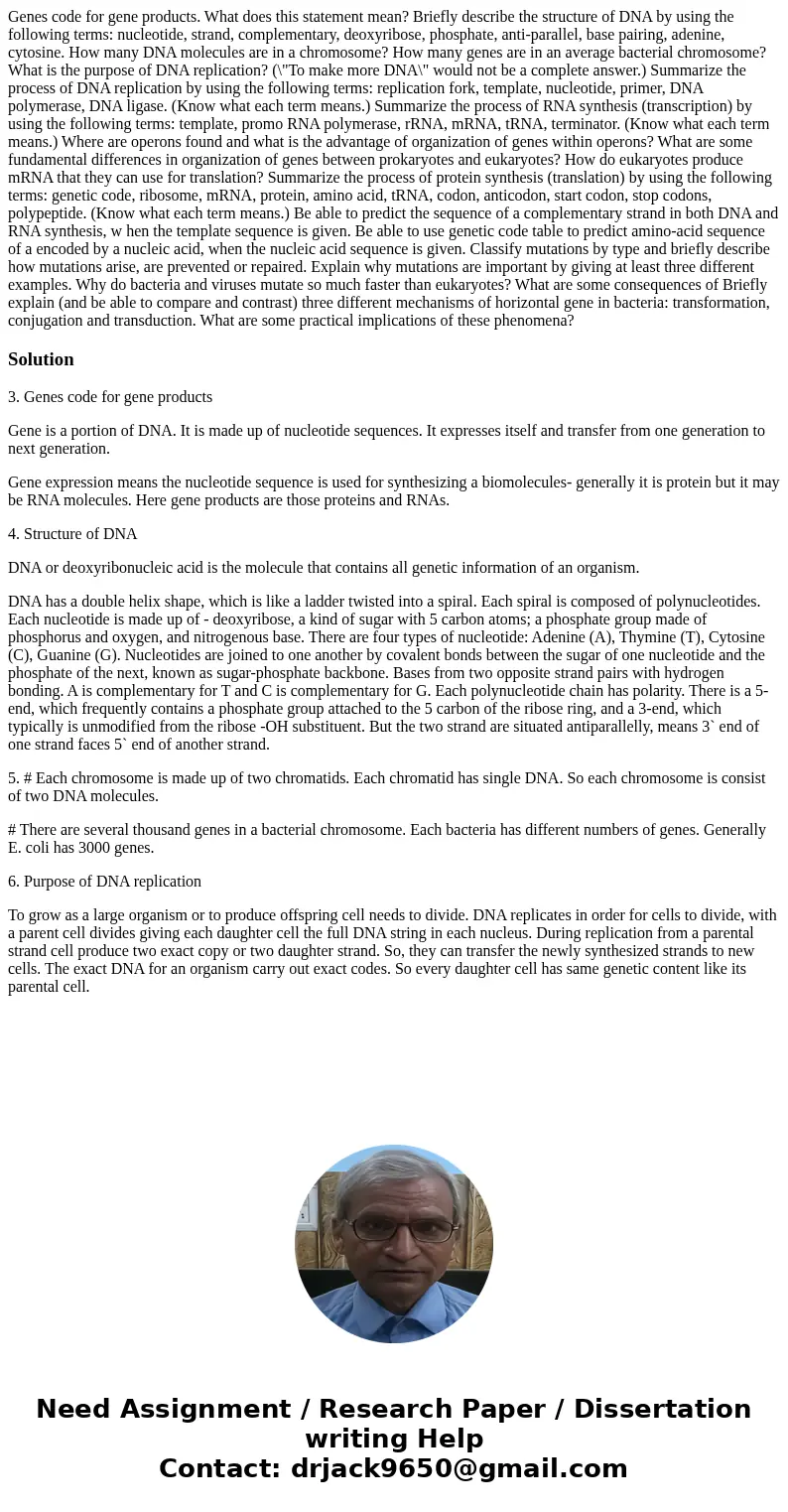Genes code for gene products What does this statement mean B
Solution
3. Genes code for gene products
Gene is a portion of DNA. It is made up of nucleotide sequences. It expresses itself and transfer from one generation to next generation.
Gene expression means the nucleotide sequence is used for synthesizing a biomolecules- generally it is protein but it may be RNA molecules. Here gene products are those proteins and RNAs.
4. Structure of DNA
DNA or deoxyribonucleic acid is the molecule that contains all genetic information of an organism.
DNA has a double helix shape, which is like a ladder twisted into a spiral. Each spiral is composed of polynucleotides. Each nucleotide is made up of - deoxyribose, a kind of sugar with 5 carbon atoms; a phosphate group made of phosphorus and oxygen, and nitrogenous base. There are four types of nucleotide: Adenine (A), Thymine (T), Cytosine (C), Guanine (G). Nucleotides are joined to one another by covalent bonds between the sugar of one nucleotide and the phosphate of the next, known as sugar-phosphate backbone. Bases from two opposite strand pairs with hydrogen bonding. A is complementary for T and C is complementary for G. Each polynucleotide chain has polarity. There is a 5-end, which frequently contains a phosphate group attached to the 5 carbon of the ribose ring, and a 3-end, which typically is unmodified from the ribose -OH substituent. But the two strand are situated antiparallelly, means 3` end of one strand faces 5` end of another strand.
5. # Each chromosome is made up of two chromatids. Each chromatid has single DNA. So each chromosome is consist of two DNA molecules.
# There are several thousand genes in a bacterial chromosome. Each bacteria has different numbers of genes. Generally E. coli has 3000 genes.
6. Purpose of DNA replication
To grow as a large organism or to produce offspring cell needs to divide. DNA replicates in order for cells to divide, with a parent cell divides giving each daughter cell the full DNA string in each nucleus. During replication from a parental strand cell produce two exact copy or two daughter strand. So, they can transfer the newly synthesized strands to new cells. The exact DNA for an organism carry out exact codes. So every daughter cell has same genetic content like its parental cell.

 Homework Sourse
Homework Sourse